The material's suitability is crucial for a part to function effectively in its designated environment. The material's hardness is a significant factor in determining this suitability. It determines whether a material define hardness as high like steel or a softer material is required for your project. Using inappropriate materials in a project can have severe consequences, particularly when the produced part is integral to a larger project. Therefore, assessing material hardness before production is indispensable to ensure success.
Select hard materials if your project requires resistance to indentation or abrasion without deformation. However, it's important to note that materials with high hard ness may not always be suitable for all projects. Consult with a knowledgeable machining company to determine the appropriate material for your specific project.
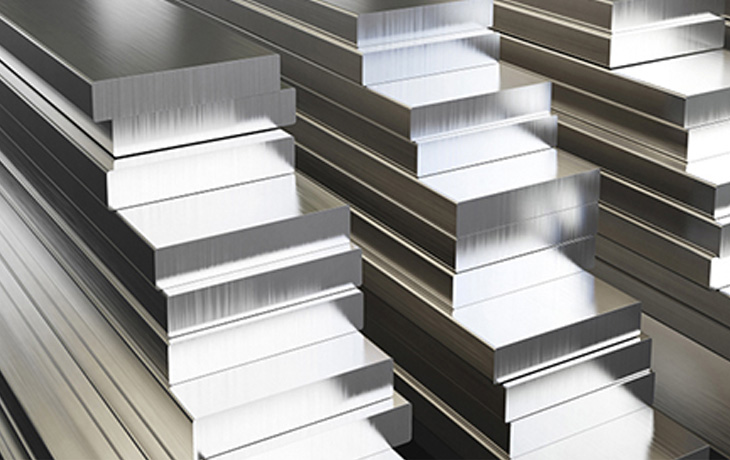
Materials by hardness refers to a material's capability to resist external force without experiencing deformation, scratching, penetration, or indentation. Put simply, the definition of hardness pertains to the material's ability to retain its physical integrity when subjected to applied force.
The hardness science definition property differs among various materials, with substances like steel exhibiting greater hardness in comparison to others such as tin. Additionally, certain non-metallic materials, including wood and plastics, exhibit characteristics akin to those of softer metals.
The hardness of materials is influenced by multiple factors that interplay to determine their magnitude. The hardness of materials depends on several factors:
Plasticity
Plasticity involves its ability to undergo permanent deformation under the influence of stress.
Elastic Stiffness
Elastic stiffness reflects the material's resistance to restoring its original shape post-deformation.
Ductility
Ductility denotes the extent of material elongation before fracturing;
Toughness
Toughness reflects the material's resistance to fracture under stress or impact.
Strain
Strain refers to the material's deformation response to applied forces.
Strength
Strength indicates the maximum load a material can endure prior to failure.
Viscoelasticity
Viscoelasticity combines both viscous and elastic behaviors exhibited by specific materials under stress.
Viscosity
Viscosity represents the material's resistance to flow.
The following presents an overview of common metal hardness examples in everyday life. Take the opportunity to investigate different materials, analyze their relative hardness,
Bronze Hardness
With regards to the hardness of metals, the hardness bronze, specifically represented by UNS C95400, is estimated to be around 170 MPa. It is worth noting that the hardness of aluminum bronzes tends to rise proportionally with the inclusion of higher levels of aluminum, along with other alloy components. Additionally, the hardness is influenced by the application of external forces that occur during cold working processes. Shifting our attention to tin bronze, denoted as UNS C90500 or commonly referred to as gun metal, its Brinell hardness is approximately 75 BHN (Brinell Hardness Number). In the case of copper beryllium, identified as UNS C17200, the Rockwell hardness is recorded to be around 82 HRB (Rockwell Hardness Scale B).
Titanium Hardness
The hardness of titanium alloys can exhibit considerable variation depending on factors such as composition and heat treatment. For instance, commercially pure titanium Grade 2 typically demonstrates a Rockwell hardness of approximately 80 HRB. On the other hand, the titanium alloy Ti-6Al-4V, commonly referred to as Grade 5, typically displays a Rockwell hardness of around 41 HRC. These distinct hardness values highlight the impact of alloy composition and heat treatment in determining the hardness characteristics of titanium alloys.
Copper Hardness
When it comes to the hardness of copper, according to Ezoic data, it demonstrates a Brinell hardness of approximately 250 MPa. Furthermore, the Vickers hardness test reveals that copper possesses a Vickers hardness of around 350 MPa. In terms of the widely recognized Mohs scale, which evaluates the relative hardness of minerals, copper falls into the category of about 3 on the hardness scale.
Brass Hardness
The strength and hardness of brass, specifically cartridge brass UNS C26000, can be described in terms of its ultimate tensile strength and Brinell hardness. The ultimate tensile strength of this type of brass is approximately 315 MPa, indicating the maximum amount of tensile stress it can withstand before fracturing. On the other hand, when measuring its resistance to indentation, the hardness brass UNS C26000 is found to be around 100 MPa, showcasing its ability to withstand external forces without easily deforming.
Steel Hardness
The hardness of steel can vary depending on factors such as carbon content. High-carbon steel, which typically contains around 0.60% to 1.00% carbon, is known for its elevated hardness compared to other steel grades. However, as the carbon content increases, the ductility of the steel tends to decrease. The Brinell hardness of high-carbon steel is typically measured to be approximately 200 MPa. This indicates a substantial level of hardness, reflecting the steel's ability to resist deformation and withstand external forces.
Iron Hardness
Iron exhibits a hardness of around 4.5 on the Mohs scale. The crystal structure of iron is commonly observed to be body-centered cubic (BCC) in nature. In metals, including iron, and many other solid materials, the atoms are arranged in ordered patterns known as crystals.
Different materials exhibit varied behavior under different conditions. For instance, a material may have the ability to endure a significant impact on a single occasion, but may not be able to withstand continuous loading. This highlights the importance of assessing material hardness to align with the specific requirements of a project.
Material hardness can be classified into three main categories, each representing unique characteristics and values:
Scratch hardness
Rebound hardness
Indentation hardness
Scratch hardness, as defined and utilized by machinists, refers to the inherent resistance of a material against surface scratches. These scratches manifest as narrow, continuous lines that appear on the surface of materials when they come into contact with a sharper, more rigid object. Machinists commonly employ scratch testing, particularly for brittle materials like ceramics, in order to evaluate a material's durability in terms of scratch resistance.
It is essential to consider scratch hardness, particularly in designs where sensitivity to scratches is prevalent. In such cases, selecting a material with a high scratch hardness becomes crucial. For example, certain machine components may necessitate friction during their operation. Employing a material with low scratch hardness in this scenario may prove inadequate. This is because even with minimal friction, the material may experience surface abrasion, ultimately impacting the overall functionality of the machine. Subsequently, frequent repairs become necessary, resulting in increased expenses.
Performing a scratch hardness test becomes imperative to assess whether a material can endure the expected levels of friction without compromising its smooth surface. Such testing aids in identifying materials that can withstand expected frictional forces, thereby preventing potential issues and minimizing the need for frequent repairs.
Dynamic hardness serves as a synonym for rebound hardness and is characterized by its resemblance to elastic hardness, as opposed to plastic hardness. Elastic hardness implies that a material experiences reversible deformation when subjected to external forces, wherein it temporarily loses its shape under the applied force and subsequently regains its original form upon force removal. Conversely, plastic deformation involves permanent shape alteration, preventing the material from returning to its original state. Consequently, rebound hardness aligns more closely with elastic hardness, where the material can undergo temporary deformation and recover its initial shape.
Rebound hardness necessitates the material's capacity to absorb impact energy and swiftly rebound it back to the indenter. Machinists employ an indenter to evaluate rebound hardness, comparing it to a reference material with a known hardness.
Measurement of the material's rebound or dynamic hardness involves dropping a diamond-tipped hammer onto the surface and recording the rebound height of the hammer upon impact. If the hammer returns close to its initial drop height, it indicates a high value for rebound hardness. Conversely, if the rebound height deviates considerably from the drop height, it signifies low rebound hardness.
Indentation hardness refers to the ability of a material to resist permanent deformation caused by a localized and continuous load. In order to assess indentation hardness, a specimen is subjected to the application of a point load until an indentation or impression is formed on its surface.
Indentation hardness tests are widely employed in various industries since many materials experience continuous loading in practical applications. The Rockwell Scale is frequently utilized to measure this type of hardness, providing a standardized and commonly recognized framework for evaluating indentation hardness.
There are several different units used to measure hardness, each associated with specific measurement methods. It is important to note that these units are not directly comparable due to their unique scales derived from different measurement techniques. However, a conversion table can be used for approximate comparisons, providing a useful indication of relative hardness.
Some of the commonly used hardness units include the Brinell Hardness Number (HB), Rockwell hardness numbers (HRA, HRB, HRC), Leeb hardness values (HLD, HLS, HLE), and Vickers hardness numbers (HV). These units are based on different testing procedures and have their own scales of measurement.
Conversely, machinists sometimes mistakenly equate hardness units with pressure units. It is essential to differentiate between the two as hardness is measured in N/mm² or Pascals, which are SI units, while pressure is measured in N/m² or kg·m−1·s−2. The distinction lies in the fact that hardness measures a material's resistance to deformation, while pressure refers to a force applied over a specific area.
To best understand and compare hardness measurements, it is advisable to consult a conversion table. Though the comparison may not be entirely accurate, it can provide a reasonable estimation of relative hardness across different measurement methods.
Brinell Hardness | Rockwell | Rockwell | Vickers | N/mm² |
HB | HRC | HRB | HV | |
469 | 50 | 117 | 505 | |
468 | 49 | 117 | 497 | |
456 | 48 | 116 | 490 | 1569 |
445 | 47 | 115 | 474 | 1520 |
430 | 46 | 115 | 458 | 1471 |
419 | 45 | 114 | 448 | 1447 |
415 | 44 | 114 | 438 | 1422 |
402 | 43 | 114 | 424 | 1390 |
388 | 42 | 113 | 406 | 1363 |
375 | 41 | 112 | 393 | 1314 |
373 | 40 | 111 | 388 | 1265 |
360 | 39 | 111 | 376 | 1236 |
348 | 38 | 110 | 361 | 1187 |
341 | 37 | 109 | 351 | 1157 |
331 | 36 | 109 | 342 | 1118 |
322 | 35 | 108 | 332 | 1089 |
314 | 34 | 108 | 320 | 1049 |
308 | 33 | 107 | 311 | 1035 |
300 | 32 | 107 | 303 | 1020 |
290 | 31 | 106 | 292 | 990 |
277 | 30 | 105 | 285 | 971 |
271 | 29 | 104 | 277 | 941 |
264 | 28 | 103 | 271 | 892 |
262 | 27 | 103 | 262 | 880 |
255 | 26 | 102 | 258 | 870 |
250 | 25 | 101 | 255 | 853 |
245 | 24 | 100 | 252 | 838 |
240 | 23 | 100 | 247 | 824 |
233 | 22 | 99 | 241 | 794 |
229 | 21 | 98 | 235 | 775 |
223 | 20 | 97 | 227 | 755 |
216 | 19 | 96 | 222 | 716 |
212 | 18 | 95 | 218 | 706 |
208 | 17 | 95 | 210 | 696 |
203 | 16 | 94 | 201 | 680 |
199 | 15 | 93 | 199 | 667 |
191 | 14 | 92 | 197 | 657 |
190 | 13 | 92 | 186 | 648 |
186 | 12 | 91 | 184 | 637 |
183 | 11 | 90 | 183 | 617 |
180 | 10 | 89 | 180 | 608 |
175 | 9 | 88 | 178 | 685 |
170 | 7 | 87 | 175 | 559 |
167 | 6 | 86 | 172 | 555 |
166 | 5 | 86 | 168 | 549 |
163 | 4 | 85 | 162 | 539 |
160 | 3 | 84 | 160 | 535 |
156 | 2 | 83 | 158 | 530 |
154 | 1 | 82 | 152 | 515 |
149 | 81 | 149 | 500 |
After determining the specific loading or environmental conditions that your component will encounter, you can proceed to assess the suitability of different material options using various hardness test methods. If you have access to the required equipment, you can perform these tests to gather valuable data and make informed decisions.
The Brinell test is utilized to assess the indentation hardness of a material. This method involves employing an indenter, typically a hardened steel ball, to create an impression on the surface of the test specimen. During the test, the indenter is held in place while a predetermined force is applied to the ball and the material's surface for a specified duration.
Following the test, the material is assigned a Brinell hardness number based on the size of the indentation formed on it. This indentation can be measured using a microscope, and the Brinell hardness number can be calculated using a specific formula or standard procedure.

Symbol:
HB = Brinell hardness (kg/mm2)
F = Force (measured in Newton)
D = Indenter diameter (measured in millimeters)
d = indentation diameter (measured in millimeters)
It is important to consider that the magnitude of the applied force on the indenter varies depending on the specific material being tested. For instance, when conducting hardness tests on hard metals such as iron and steel, quality control experts commonly use a standard load of 3000 kg (or 30,000 N). Conversely, for softer materials like copper and brass, a load of 500 kg (or 5000 N) is typically recommended for accurate results. It is essential to adjust the applied force according to the material's properties to ensure a precise assessment of its hardness.
Similar to the Brinell hardness test, the Rockwell hardness test is utilized for measuring indentation hardness and involves the use of an indenter, typically a steel ball or a diamond-tipped cone.
However, in the Rockwell hardness test, the procedure differs slightly. Initially, a minor load (usually around 10 kg or 100 N) is applied to hold the indenter in place before the major test load is introduced. While the minor load remains, the indentation depth is measured after the major load is removed.
The hardness number is then determined by referencing the appropriate Rockwell hardness scale (such as A, B, C, etc.). The selection of the scale is based on the type of indenter used and the magnitude of the test load applied to the material. For instance, when measuring the hardness of steel alloys, a diamond cone indenter with a major load of up to 140 kg is employed, and the hardness number is read on the "C" scale.
In contrast, for softer metals like copper alloys, quality control experts utilize a diamond steel ball with a major load of up to 100 kg and refer to the "B" scale to read the hardness number. The choice of the scale and indenter is influenced by the specific material being tested, enabling accurate hardness measurements across various metals.
If you intend to evaluate the scratch hardness of a material, there is a suitable method available for such testing. Traditionally, this test involves intentionally scratching the material against a reference material known for its hardness. The Mohs hardness test, specifically, employs a series of ten reference materials with varying degrees of hardness. The choice of reference material depends on the type of material being tested. Ultimately, a numerical hardness value is assigned to the test material based on the observed results.
In this test, talc is considered the softest material with a value of 1, while diamond is regarded as the hardest material with a value of 10.
A modern Mohs hardness test typically employs a Rockwell diamond indenter. The operation principle remains similar to the traditional method, involving the controlled application of a suitable load for a specific period to scratch the test specimen.
The shore scleroscope is an instrument utilized to evaluate the rebound hardness of a material. It consists of a graduated glass tube fastened to a stand. To assess the rebound hardness of a material, a diamond-tipped hammer is dropped through the glass tube onto the specimen.
The hardness value is determined by measuring the height to which the hammer rebounds upon striking the test piece. The rebound height is directly proportional to the material's hardness level. In other words, a material with higher hardness will exhibit a greater rebound height compared to a material with lower hardness. This relationship enables the determination and comparison of hardness values using the shore scleroscope method.
A material hardness chart is a convenient tool that allows for easy identification of the hardness values of commonly encountered materials. The metal hardness scale provides the hardness values of these materials using different measurement methods. For instance, the presented chart displays the hardness values of metals such as aluminum and titanium, utilizing the Brinell scale as the measurement method. By referring to the chart, there is no need to individually assess the hardness of a specific raw material if it is listed, simplifying the hardness evaluation process.
Metal | Alloy& Temper | Hardness Rockwell B-Scale | Yield Strength (KSI) | Yield Strength (Mpa) | Ductility Degree |
Aluminum | A93003-H14 | 20 to 25 | 21 | 145 | 1 |
Aluminum | A93003-H34 | 35 to 40 | 29 | 200 | 1 |
Aluminum | A93003-H14 | 20 to 25 | 20 | 138 | 1 |
Aluminum | A96061-T6 | 60 | 40 | 275 | 4 |
Copper | 1/8 hard (cold roll) | 10 | 28 | 193 | 1 |
Gilding Metal | 1/4 hard | 32 | 32 | 221 | 1 |
Jewelry Bronze | 1/4 hard | 47 | 37 | 255 | 2 |
Red Brass | 1/4 hard | 65 | 49 | 338 | 2 |
Cartridge Brass | 1/4 hard | 55 | 40 | 276 | 1 |
Yellow Brass | 1/4 hard | 55 | 40 | 276 | 2 |
Muntz Metal | 1/8 hard | 55 | 35 | 241 | 3 |
Architectural Bronze | As Extruded | 65 | 20 | 138 | 4 |
Phosphor Bronze | 1/2 hard | 78 | 55 | 379 | 3 |
Silicon Bronze | 1/4 hard | 75 | 35 | 241 | 3 |
Aluminum Bronze | As Cast | 77 | 27 | 186 | 5 |
Nickel Silver | 1/8 hard | 60 | 35 | 241 | 3 |
Steel (Low Carbon) | Cold-rolled | 60 | 25 | 170 | 2 |
Stainless Steel304 | Temper Pass | 88 | 30 | 207 | 2 |
Lead | Sheet Lead | 5 | 0.81 | 5 | 1 |
Monel | Temper Pass | 60 | 27 | 172 | 3 |
Zinc-Cu Tn Alloy | Rolled | 40 | 14 | 97 | 1 |
Titanium | Annealed | 80 | 37 | 255 | 3 |
If you have been in search of a trustworthy company that provides machining services for various materials, your search concludes here with Richconn. We offer a complimentary analysis of your material hardness, making us the ideal choice for all your machining needs.
High Precision and Tight Tolerances
Through the integration of cutting-edge technology and extensive expertise, our CNC precision machining services offer exceptional results. As a company certified in ISO 13485 and ISO 9001:2008, we emphasize the importance of quality and guarantee that all components meet the required specifications.
Fast Prototyping and Production
We accelerate your product development, covering prototyping to production. Quick turnarounds transform designs into prototypes, facilitating faster iterations and reducing time-to-market. Our CNC machining is adaptable for any production volume.
Dedicated Customer Support
Richconn offers skilled engineers to optimize your designs, reduce expenses, and improve quality. Rely on our team for valuable guidance and unparalleled engineering support, guaranteeing exceptional project outcomes.
For effective material selection in your project, conducting a thorough material hardness test is crucial. There are multiple methods available to assess material hardness. Seeking guidance from an expert company is recommended to receive professional advice and expertise on material hardness meaning. With our extensive experience, we are well-prepared to offer technical recommendations tailored to your specific projects.
 The Top 7 CAD/CAM Software for CNC ProjectsMarch 18, 2024CAD/CAM software for CNC projects is a specialized tool used to design and control the machining of parts. Here are the top 7 CAD/CAM software for your choice.view
The Top 7 CAD/CAM Software for CNC ProjectsMarch 18, 2024CAD/CAM software for CNC projects is a specialized tool used to design and control the machining of parts. Here are the top 7 CAD/CAM software for your choice.view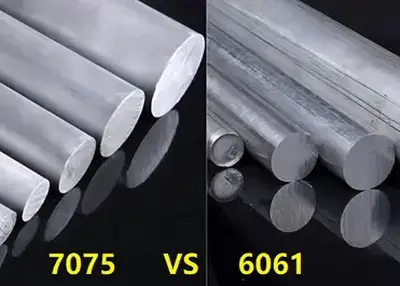 Comparison of 7075 Aluminum Alloy vs 6061 Aluminum AlloyNovember 27, 2023Aluminum alloy is a widely used metal material with the advantages of light weight, high strength, corrosion resistance and recyclability. There are many types of aluminum alloys, and different alloying elements and heat treatment processes affect the properties and uses of aluminum alloys.view
Comparison of 7075 Aluminum Alloy vs 6061 Aluminum AlloyNovember 27, 2023Aluminum alloy is a widely used metal material with the advantages of light weight, high strength, corrosion resistance and recyclability. There are many types of aluminum alloys, and different alloying elements and heat treatment processes affect the properties and uses of aluminum alloys.view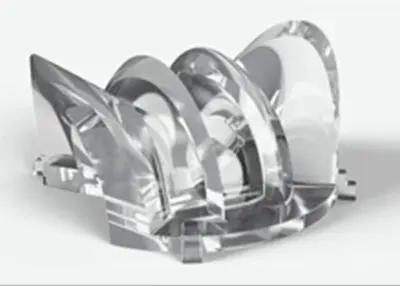 CNC Manufacturing: Precision Craftsmanship in the Digital AgeNovember 1, 2023CNC machine tools (CNC machines) are highly automated manufacturing tools that use a computerized control system to precisely control the movement of tools and workpieces to perform a variety of machining operations.CNC manufacturing has been used in a wide variety of industries, from automotive to aerospace, and from medical devices to furniture manufacturing. Below are some examples of CNC manufacturing, demonstrating its wide range of applications in different fields:view
CNC Manufacturing: Precision Craftsmanship in the Digital AgeNovember 1, 2023CNC machine tools (CNC machines) are highly automated manufacturing tools that use a computerized control system to precisely control the movement of tools and workpieces to perform a variety of machining operations.CNC manufacturing has been used in a wide variety of industries, from automotive to aerospace, and from medical devices to furniture manufacturing. Below are some examples of CNC manufacturing, demonstrating its wide range of applications in different fields:view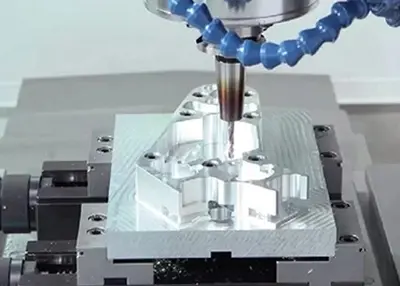 Five Axis CNC Machining Features and AdvantagesNovember 4, 2022Five-axis machining machines to quickly and efficiently manufacture complex milled parts in small batches from a variety of materials. Using five-axis precision machining is often a more efficient way...view
Five Axis CNC Machining Features and AdvantagesNovember 4, 2022Five-axis machining machines to quickly and efficiently manufacture complex milled parts in small batches from a variety of materials. Using five-axis precision machining is often a more efficient way...view Metal Plating Finishes: Picking the Best for Your Custom PartsMay 16, 2024What are metal plating finishes? How are they applied? What are their benefits and drawbacks? Find out in this guide to metal plating finishes.view
Metal Plating Finishes: Picking the Best for Your Custom PartsMay 16, 2024What are metal plating finishes? How are they applied? What are their benefits and drawbacks? Find out in this guide to metal plating finishes.view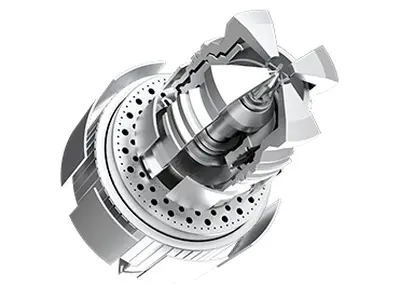 Unleashing Precision: Richconn's CNC Machined Steel ExcellenceNovember 10, 2023Welcome to the realm of precision and durability, where machined steel takes center stage. In this comprehensive exploration, we'll navigate through the intricacies of machined steel, unveil its diverse applications, compare various types, delve into performance metrics, examine Richconn's CNC machining advantages, and provide essential knowledge on mechanical machining.view
Unleashing Precision: Richconn's CNC Machined Steel ExcellenceNovember 10, 2023Welcome to the realm of precision and durability, where machined steel takes center stage. In this comprehensive exploration, we'll navigate through the intricacies of machined steel, unveil its diverse applications, compare various types, delve into performance metrics, examine Richconn's CNC machining advantages, and provide essential knowledge on mechanical machining.view